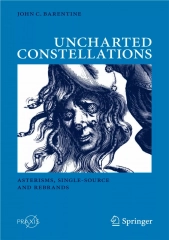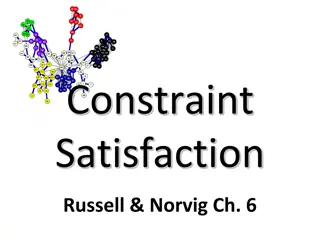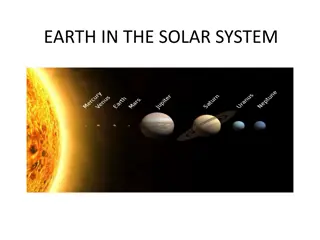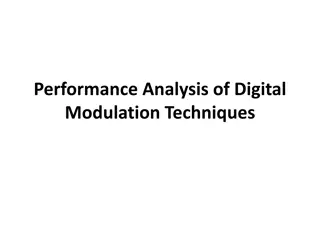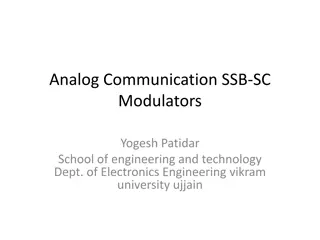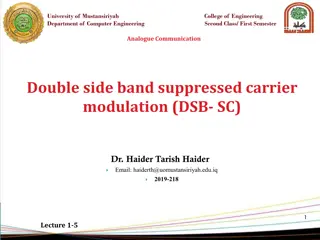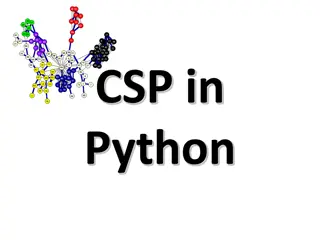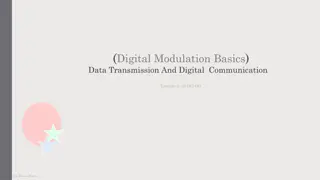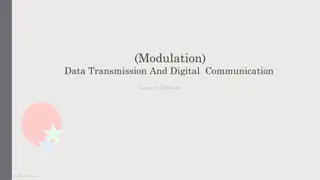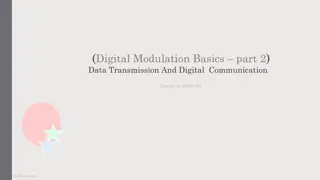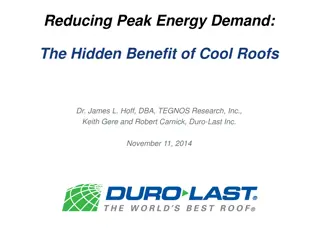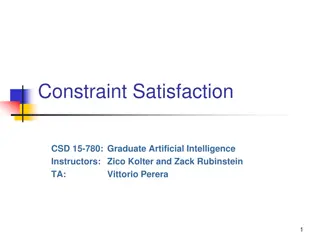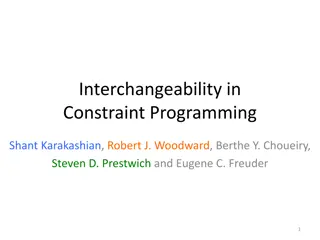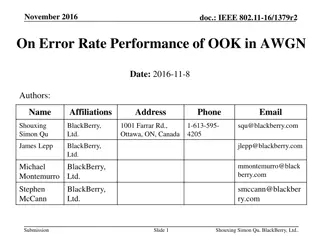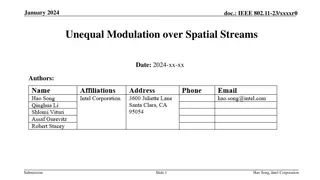Potential of Non-Uniform Constellations for Peak Power Constraint in SC Modulation
This document discusses the potential of non-uniform constellations (NUCs) for single carrier (SC) modulation, focusing on the design of NUCs with 64 signal points to maximize coding gain while adhering to peak-to-average power ratio (PAPR) constraints. NUCs show a significant overall gain of up to 1.7 dB compared to uniform constellations (UCs). Various factors such as improved robustness against phase noise, reduced PAPR, and coding gain are highlighted, making NUCs a promising option for enhancing performance in SC modulation scenarios.
Download Presentation

Please find below an Image/Link to download the presentation.
The content on the website is provided AS IS for your information and personal use only. It may not be sold, licensed, or shared on other websites without obtaining consent from the author.If you encounter any issues during the download, it is possible that the publisher has removed the file from their server.
You are allowed to download the files provided on this website for personal or commercial use, subject to the condition that they are used lawfully. All files are the property of their respective owners.
The content on the website is provided AS IS for your information and personal use only. It may not be sold, licensed, or shared on other websites without obtaining consent from the author.
E N D
Presentation Transcript
July 2015 Potential of Non-Uniform Constellations with Peak Power Constraint Date: 2015/07/15 doc.: IEEE 802.11-15/0835r0 Authors: Name Affiliations Address Phone +49-711- 5858236 email thomas.handte@ eu.sony.com daniel.schneider@ eu.sony.com Thomas Handte Sony Deutschland GmbH Hedelfinger Str. 61, D-70327 Stuttgart, Germany Daniel Schneider Submission Slide 1 Thomas Handte, Sony
July 2015 doc.: IEEE 802.11-15/0835r0 Abstract This contribution outlines the potential of non-uniform constellations (NUCs) for single carrier (SC) modulation NUCs with 64 signal points are considered The NUCs are designed for maximum coding gain at a given constraint on the peak-to-average power ratio (PAPR) Several PAPR constraint categories are investigated The NUCs are shown to have significant overall gain of up to 1.7 dB compared to rect. uniform constellations (UCs) Submission Slide 2 Thomas Handte, Sony
July 2015 doc.: IEEE 802.11-15/0835r0 Motivation Higher order QAMs discussed in e.g. [1]-[4] as potential technology for 802.11ay OFDM: 128-QAM, 256-QAM (up to 64-QAM in ad) SC: 64-QAM (up to 16-QAM in ad) Non-uniform constellations performance compared to uniform constellations (UCs) NUCs provide Coding gain up to 0.7dB for 256-QAM (OFDM) [3] Improved robustness against phase noise [4] Reduced PAPR and (small) coding gain APSK for 64-QAM (SC) [5] A moderate increase in demapper complexity [3-5] 2D NUCs feature quadrant symmetry (NUCs) provide increased Submission Slide 3 Thomas Handte, Sony
July 2015 doc.: IEEE 802.11-15/0835r0 Introduction NUCs presented in [3,4] have originally been designed for OFDM Nonetheless, those NUCs feature gains in SC too Compared to UCs, those NUCs feature A coding gain of up to 0.4 dB [3] An additional gain of 0.1 dB in presence of phase noise [4] i.e. 0.5 dB in total A even higher gain can be achieved with a phase noise aware demapper However, optimization for PAPR has not been performed In this contribution, we outline the potential of NUCs which have been optimized with various PAPR constraints Those NUCs are in particular applicable for SC modulation Submission Slide 4 Thomas Handte, Sony
July 2015 doc.: IEEE 802.11-15/0835r0 Coding Gain of NUCs NUCs feature a coding gain UCs not optimal in the sense of channel capacity, results in a SNR gap NUCs can partly exploit this gap with a small complexity increase Example: rect. 64-UC and 64-NUC of [3,4] for CR=1/2 ~ 0.5dB gain Small gap remains mainly due to discrete signal pts. Submission Slide 5 Thomas Handte, Sony
July 2015 doc.: IEEE 802.11-15/0835r0 PAPR requirements OFDM vs. SC OFDM PAPR of the constellation unimportant since the OFDM modulator determines the envelope of the transmit signal NUCs of [3,4] have been designed for maximum coding gain SC PAPR of the constellation directly influences the envelope of the transmit signal NUCs for SC modulation require PAPR consideration However, coding gain and PAPR not independent Large coding gain means large PAPR and vice versa Submission Slide 6 Thomas Handte, Sony
July 2015 doc.: IEEE 802.11-15/0835r0 Quantifying the gain of SC NUCs Two sources Coding gain: ?? Defined as the difference in target SNR ? between rect. UC and NUC at a FER of 10-2 ??= ??? ???? PAPR gain: ?? Defined as the difference between PAPR ? of UC and NUC ??= ?? ??? ?? reveals at the power amplifier (PA) PA backoff can be selected smaller NUC Indicates the sqrt of the average Tx power UC Submission Slide 7 Thomas Handte, Sony
July 2015 doc.: IEEE 802.11-15/0835r0 SC NUC parameters We optimized various NUCs for different parameters NUC Cat. Coding gain ?? PAPR ? A ??, = arg max ??+ ??( ) 0 max max B C D min 2.77dB unconstraint Annotation A. maximized overall gain, i.e. sum of PAPR and coding gain B. same performance as UC but minimum PAPR C. maximum coding gain at 2.77dB PAPR (same PAPR value as 64-APSK of [5]) D. NUCs for OFDM [3,4] Submission Slide 8 Thomas Handte, Sony
July 2015 doc.: IEEE 802.11-15/0835r0 Simulations Parameters Focus on constellations with 64 signal points .11ad LDPC with code rates (CR): 1/2, 5/8, 3/4, 13/16 SC modulation Message Length: 1000 bytes AWGN channel Benchmarks Regular rect. 64-QAM 64-APSK of [5] Submission Slide 9 Thomas Handte, Sony
July 2015 doc.: IEEE 802.11-15/0835r0 Results: Coding Gain vs. PAPR for rate 1/2 Coding gain and PAPR are clearly dependent Tradeoff between ?? and ? required Cat. A requires impr. perf. ??< 0 dB UC has poorest performance NUC Cat. ?? ? A max ??+ ??(?) impr. perf. B min 0 C max 2.77dB D max unconstraint Submission Slide 10 Thomas Handte, Sony
July 2015 doc.: IEEE 802.11-15/0835r0 Results: Coding Gain vs. PAPR for all rates Coding gain and PAPR are clearly dependent Performance slightly dependent on code rate Cat. A criterion yields strong variation in ?? NUC Cat. ?? ? A max ??+ ??(?) B min 0 C max 2.77dB D max unconstraint Submission Slide 11 Thomas Handte, Sony
July 2015 doc.: IEEE 802.11-15/0835r0 Results: Overall Gain Cat. A Cat. B Cat. C Cat. D 64-APSK NUC Cat. ?? ? Overall gain in decreasing order (holds for all rates): Cat. A, B, C, 64-APSK, D Overall gain of Cat. A and B comparable A max ??+ ??(?) B min 0 C max 2.77dB D max unconstraint Submission Slide 12 Thomas Handte, Sony
July 2015 doc.: IEEE 802.11-15/0835r0 Conclusion Investigation of NUCs with PAPR constraint There is a huge potential for NUCs with limited PAPR 64-NUCs with 4 different constraints considered Overall gain depending on code rate and optimization constraint 1.4 dB to 1.7 dB gain compared to uniform 64-QAM (Cat. A) NUCs are a promising technology for .11ay Significant performance gains Gains are in the order of a code rate SNR spacing Only a moderate complexity increase Further aspects under consideration E.g. performance in fading channels, influence of impairments, evaluation of quantization effects Submission Slide 13 Thomas Handte, Sony
July 2015 doc.: IEEE 802.11-15/0835r0 References 1. 11-14-1378-00-ng60 PHY rate for NG60 2. 11-14-0652-01-0wng-wng Next Generation 802.11ad 3. 11-15-0096-01-ng60 Non-uniform Constellations for higher Order QAMs 4. 11-15-0601-00-00ay Non-uniform Constellations for 64QAM 5. 11-15-0339-00-ng60 SC-64APSK for 11ay Submission Slide 14 Thomas Handte, Sony
July 2015 doc.: IEEE 802.11-15/0835r0 APPENDIX Submission Slide 15 Thomas Handte, Sony
July 2015 doc.: IEEE 802.11-15/0835r0 NUCs of Cat. A CR 1/2 CR 5/8 CR 3/4 CR 13/16 Submission Slide 16 Thomas Handte, Sony
July 2015 doc.: IEEE 802.11-15/0835r0 NUCs of Cat. B CR 1/2 CR 5/8 CR 3/4 CR 13/16 Submission Slide 17 Thomas Handte, Sony
July 2015 doc.: IEEE 802.11-15/0835r0 NUCs of Cat. C CR 1/2 CR 5/8 CR 3/4 CR 13/16 Submission Slide 18 Thomas Handte, Sony
July 2015 doc.: IEEE 802.11-15/0835r0 NUCs of Cat. D See [4] Submission Slide 19 Thomas Handte, Sony


